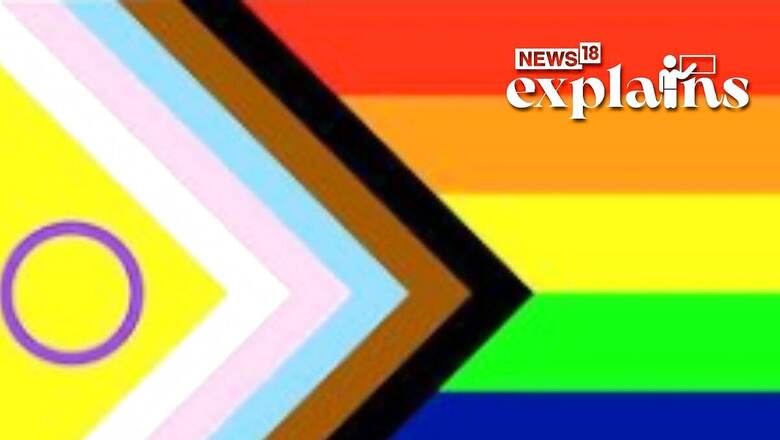
views
As Pride Month unfolds, celebrations are taking place around the world, including in India. People from diverse backgrounds are coming together to honor and embrace the LGBTQ+ community’s rich history, achievements, and ongoing struggle for equality. In this inclusive spirit, a newer version of the pride flag is being prominently displayed, symbolizing the evolving understanding and recognition of various sexual orientations and gender identities.
What is the Pride Flag?
Over the last couple of years, the most popular has been the rainbow-striped Pride flag has undergone updates to reflect the intersectional diversity of LGBTQIA2-S communities.
However, before the rainbow flag gained popularity, different symbols were utilized by these communities, according to a report by Los Angeles County of Department of Mental Health. For instance, the pink triangle, derived from the symbol enforced on gay prisoners in Nazi concentration camps, was widely used, particularly during the HIV/AIDS epidemic. Other symbols included green carnations, purple handprints, the Greek lambda symbol, blue feathers, and ace playing cards.
In the late 1970s, Harvey Milk, the first openly gay man elected to public office, asked his friend Gilbert Baker to create a symbol representing the gay community. Baker, in collaboration with Lynn Segerblom (known as Faerie Argyle Rainbow), designed the original rainbow-striped flag with eight colors.
Each color held symbolic meaning, such as hot pink representing sex, red for life, orange for healing, yellow for sunlight, green for nature, turquoise for magic and art, indigo for serenity, and violet for spirit, according to the report. However, the flag was later modified to a six-color version due to manufacturing and dying challenges, resulting in the familiar rainbow flag we know today.
While there are specific Pride flags representing various identities within the LGBTQIA2-S community, the rainbow-striped flag has historically been the most widely recognized symbol representing Pride for the community as a whole.
A More Inclusive Flag
In celebration of Pride Month in 2021, the iconic rainbow flag was revamped to prioritize inclusivity within the LGBT+ movement. This updated design aimed to incorporate and recognize intersex individuals, and it was spearheaded by Valentino Vecchietti.
However, the new Pride flag was an evolved version of other inclusive flags seen over the years.
In 2013, Morgan Carpenter from Intersex Human Rights Australia designed the intersex flag, bringing visibility to intersex individuals. Then, in 2017, Philadelphia’s Office of LGBT Affairs, led by civil rights activist Amber Hikes, added black and brown stripes to the rainbow flag to represent and include people of color within the community.
Building upon these advancements, in 2018, Daniel Quasar redesigned the flag to include trans people, resulting in the creation of the Pride Progress flag. This version aimed to recognize and uplift the transgender community within the larger LGBTQ+ movement, according to a report by The Independent.
Continuing the journey of inclusion, in 2021, Valentino Vecchietti from Intersex Equality Rights UK played a crucial role in the development of the Pride Progress flag design, incorporating the intersex flag.
The 2021 Flag Explained
The Intersex-Inclusive Progress Pride Flag is so named because it specifically aims to include and represent intersex individuals within the broader LGBTQ+ community. The term “intersex” refers to individuals who are born with sex characteristics that do not align with typical binary notions of male or female bodies. Unfortunately, the experiences and identities of intersex people have often been overlooked or marginalized within queer narratives, according to a report by Indian Express.
According to the report, the new colours represent:
Red: Life
Orange: Healing
Yellow: New Ideas
Green: Prosperity
Blue: Serenity
Violet: Spirit
Chevron Part
Black and brown: people of colour
White, blue and pink: transpeople
Yellow with purple circle: Intersex people


















Comments
0 comment